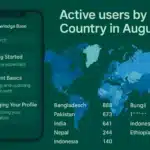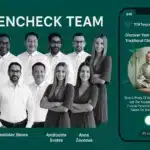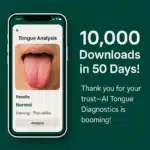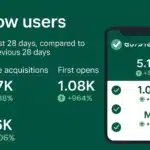AI tongue eye diagnostics myzencheck customvision foundry
This study introduces an AI-powered health diagnostics solution developed by MyZenCheck that integrates tongue diagnostics scan and eye analysis scan based on Traditional Chinese Medicine (TCM) principles. Using Microsoft’s Custom Vision for image segmentation and AI Foundry agents for intelligent processing and diagnosis, the platform demonstrates how modern AI tools can enhance personal health awareness. The system offers users real-time feedback via mobile apps, creating a bridge between ancient diagnostics and modern machine learning.
1. Introduction
- Background on TCM diagnostics
- Limitations of traditional methods (subjectivity, lack of scalability)
- Rise of AI in health monitoring
- Purpose: To develop and test an AI-based diagnostic platform using Microsoft tools and TCM methodology.
2. System Architecture
2.1. Data Collection via MyZenCheck App
- Tongue and eye images collected through mobile applications
- Secure cloud storage with anonymization
- Optional health survey data included for better contextual accuracy
2.2. Image Segmentation Using Microsoft Custom Vision
- Custom Vision model trained to identify key visual features (e.g., cracks, color, coating, pupil size)
- Project classification: Object Detection for segmentation and labeling
- Dataset: 500images
2.3. Analysis via AI Foundry Agents
- Agents built using Azure AI Foundry logic
- Tasks: Feature extraction → Pattern matching → TCM-based diagnosis logic
- Multi-step reasoning and personalized advice generation
3. Methodology
- Image pre-processing steps
- Training strategy and performance metrics in Custom Vision
- Rule-based and probabilistic models within AI Foundry agents
- Cross-validation and testing of diagnostic accuracy
4. Results
4.1. Segmentation Accuracy
- Precision/Recall for tongue features, eye markers
- Confusion matrix for common diagnostic outcomes
- Comparison with manual annotation by TCM experts
4.2. Diagnostic Relevance
- Agreement score with expert TCM practitioners
- Case studies: Hormonal imbalance, digestion issues, stress detection
5. Discussion
- Advantages: Scalability, cost-efficiency, objectivity
- Challenges: Lighting variability, user compliance, interpretability
- Limitations: Not a replacement for medical consultation
6. Conclusion and Future Work
- Summary of diagnostic performance
- Integration roadmap: Real-time recommendations, multilingual expansion
- Research direction: Combine tongue and eye data for higher accuracy
References
- TCM foundational texts
- Microsoft Custom Vision documentation
- AI Foundry developer documentation
- Peer-reviewed AI-health interface studies
- Google play donwload
- What Tongue Diagnostics Reveal About Global Health Gaps: Insights from 7,300 Users
- MyZenCheck Team Expands — 10 AI Agents Now Active, Aiming for 25 by Year-End
- MyZenCheck’s AI Tongue Diagnostic App Hits 10,000 Downloads in Just 50 Days
- Evaluation of the MyZenCheck Project After 2 Months: Why We Declined a €500K Offer
- AI Tongue Diagnostics Reaches 5,000 Downloads with a 5-Star Rating on Google Play
